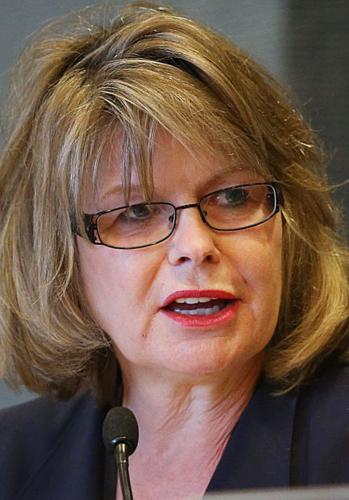PHOENIX — The Arizona Supreme Court will not block a new state law that will force Pima and Pinal counties to hike taxes on their own residents to make up for a budget-saving maneuver approved by lawmakers and the governor.
Without comment, the justices brushed aside a request by attorneys for Pima County that they immediately take up the question of the legality of the new law. Attorney Joe Kanefield had hoped for a quick — and final — resolution ahead of next month’s deadline for counties to set their property tax rates.
“Obviously, we took a chance,” he said Thursday of going directly to the state’s highest court. “That was the quickest way to resolve it with absolute finality.”
In refusing to take up the case now, the justices did not rule on the merits of Kanefield’s argument that the governor and lawmakers acted illegally. Instead, they said the case should go through the normal process like any other lawsuit, starting in Superior Court.
That process, however, could take months, if not longer. And whichever side loses is expected to appeal, meaning the issue ultimately will be before the justices
“It could take years before a final decision is reached,” Kanefield said.
But what all that means is the two counties affected will have to hike their taxes in the interim to meet the obligations of the law.
What’s worse, said Kanefield, is that the delay alone will cost Pima — and Pinal — taxpayers millions of dollars, even if the high court ultimately voids the law.
“Any relief will be strictly prospective,” he said, saying it will be “impossible” for counties to recover money already paid to school districts to make up for what the state is no longer funding.
“That money will be long gone, never again to be seen by the taxpayers who provided it,” Kanefield said.
There’s another cost being borne by Pima County taxpayers: The Supreme Court ordered the county to pay the legal fees incurred by the Attorney General’s Office in arguing the justices should reject the case.
The lawsuit stems from a 1980 voter-approved constitutional provision capping the tax rate for homeowners for all primary property taxes for all jurisdictions at $10 for every $100 in assessed valuation.
In cases where the levy exceeds that, such as when Pima County’s levy is combined with TUSD’s tax rate, the state has filled in the difference.
This past session, though, lawmakers allocated only $1 million for such aid to each county, forcing counties to replace the rest of the money for affected school districts. That means all Pima County residents — not just residents with TUSD boundaries — will be footing the tax bill for the amount the county now has to give to the district.
And they empowered a special Property Tax Oversight Commission to decide how much other levels of government would need to cough up to ensure that the cut in state funding did not leave school districts short.
Kanefield said the result is that Pima County taxpayers will have to find close to $18.4 million; for Pinal County the figure approaches $7.7 million.
He contends the Legislature’s budget-balancing maneuver is illegal because it means people from each county are being taxed to support schools where they do not live, on top of the school taxes they are paying where they reside.
But Ally Miller, the lone Pima County supervisor who opposed suing the state, said the argument about spreading taxes county-wide has no merit.
She pointed out what the state had been doing up until now was backfilling the budgets of places like the Tucson Unified School District with tax dollars from around the state.
“Was that fair?” Miller asked. “Is it fair that the residents of Maricopa, La Paz, all of these other counties were subsidizing Pima County?”
But County Administrator Chuck Huckelberry said that ignores a crucial fact.
“The Constitution makes the state responsible for education, not the county,” he said.
Miller said she also opposed the lawsuit believing that the county could have come to some agreement with lawmakers. But alternatives offered by county lobbyist Michael Racy were rejected.
Kanefield’s arguments are not limited to unfair taxation. He also contends it’s improper to let the unelected oversight commission make decisions on taxes.
The actual hit to Pima County residents in higher taxes is going to be something closer to $8.4 million. Kanefield said the county hopes to make up the difference by using cash left over at the end of the just-completed fiscal year.
“The Board of Supervisors chose to go with the lower figure to minimize the tax burden on Pima County taxpayers created by this unconstitutional legislation,” Kanefield said.
John Lopez IV, the state’s solicitor general, has not disputed that lawmakers balanced the budget for the new fiscal year that began July 1 by reducing the amount the state has to pay when local taxes are too high. But he disputed the contention that it means higher local property taxes for county residents, saying there are alternatives, like a sales tax.
Kanefield, however, said that is not an option, as other state laws allow sales tax revenues to be used solely “to support and enhance countywide services.” This, he said, does not fit that definition.







